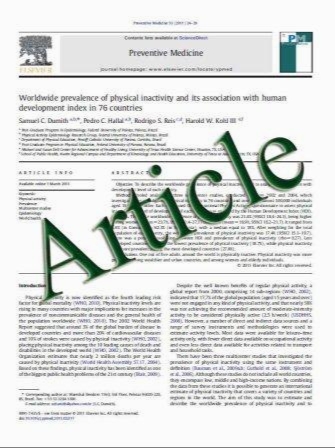Lower gastrointestinal perforation in rheumatoid arthritis patients treated with conventional DMARDs or tocilizumab: a systematic literature review
- نوع فایل : کتاب
- زبان : انگلیسی
- مؤلف : Taras Gout & Andrew J. K. ضstِr & Muhammad K. Nisar
- چاپ و سال / کشور: 2011
Description
Tocilizumab, a monoclonal antibody targeting the IL-6 receptor, has recently been added to the therapeutic armamentarium against rheumatoid arthritis (RA). Despite its overall safety, concerns have been raised regarding diverticular perforation in patients receiving the drug. The aim of our research was to document the incidence of diverticular disease in RA patients treated in the predisease- modifying anti-rheumatic drug (DMARD) era, following treatment with conventional DMARDs, and subsequent to tocilizumab therapy. We performed a systematic literature review in MEDLINE, EMBASE, Conference Proceedings Citation Index–Science, Cochrane Central Register of Controlled Trials and Current Controlled Trials up to Nov. 2010. The publication titles and abstracts were independently assessed by two reviewers for relevance and quality, and the review was conducted following guidelines from the Centre for Reviews and Dissemination. In the pre-DMARD period of RA management, where patients were largely treated with NSAIDs and corticosteroids, gastrointestinal (GI) complications were a substantial cause of mortality with diverticulitis and colonic ulcers accounting for almost a third of GI-related deaths. In contrast, our search did not reveal any evidence of diverticular perforation in patients treated with conventional DMARDs. Eighteen cases of lower GI perforation (16 of whom had diverticulitis) have been documented in recent conference proceedings following tocilizumab treatment in clinical trials, with a lower GI perforation rate of 1.9 per 1,000 patient years (PY). This lies between the reported rate of GI perforations for corticosteroids and anti-TNF-ل agents in the United Health Care database, with rates of 3.9 per 1,000 PY (95% CI 3.1–4.8) and 1.3 per 1,000 PY (95% CI 0.8–1.9), respectively. The majority of these patients were concurrently prescribed NSAIDs and/or long-term corticosteroids. Traditional DMARD therapy for RA appears not only to have modified the risk of lower GI perforation but prevented it. The risk of diverticular perforation may be slightly higher in patients treated with tocilizumab compared with conventional DMARDs or anti-TNF agents, but lower than that for corticosteroids. The mechanism of action of IL-6 antagonism in the pathophysiology of diverticular perforation has yet to be elucidated
Clin Rheumatol Received: 23 May 2011 / Revised: 13 July 2011 / Accepted: 1 August 2011


